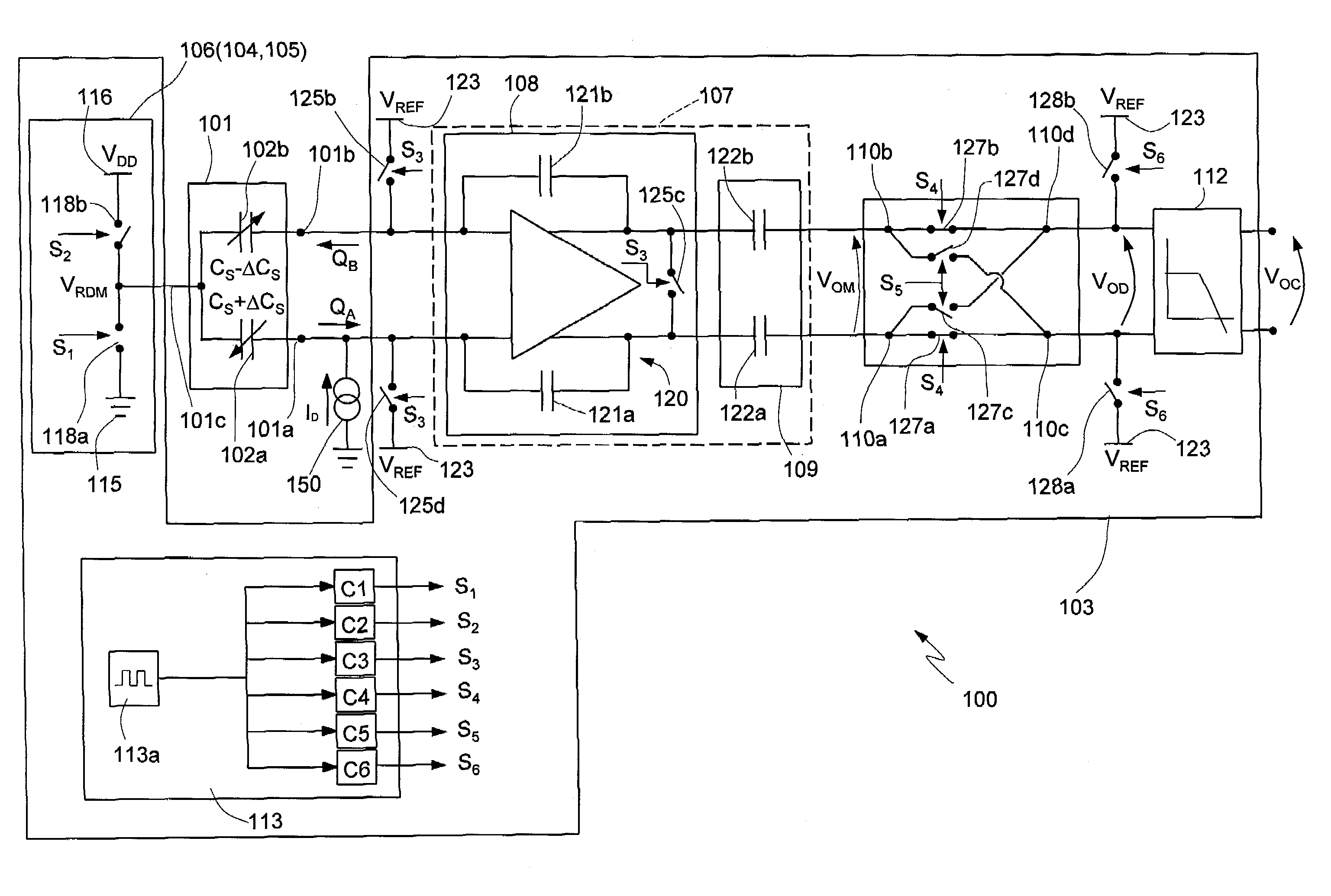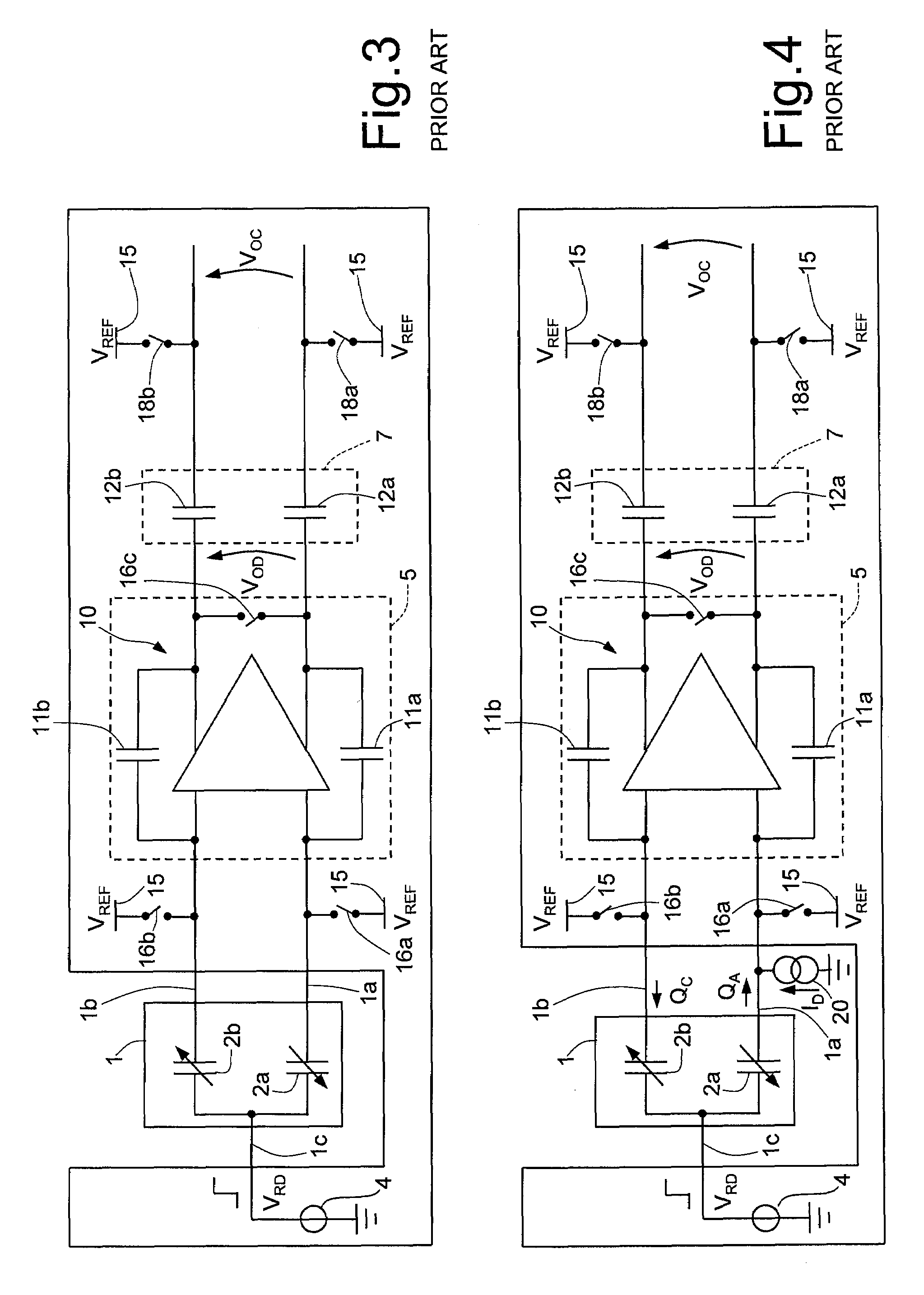Device and method for reading a capacitive sensor, in particular of a micro-electromechanical type
a capacitive sensor and micro-electromechanical technology, applied in the field of micro-electromechanical type devices and methods, can solve the problem that the cds technique does not enable suppression of the low-frequency disturbance generated upstream of the charge amplifier
- Summary
- Abstract
- Description
- Claims
- Application Information
AI Technical Summary
Benefits of technology
Problems solved by technology
Method used
Image
Examples
second embodiment
[0058]FIG. 10 shows the invention. In this case, an acceleration-detection apparatus 200 comprises an inertial sensor 201, of the differential capacitive MEMS type, as already described previously, and a read device 203, associated to the inertial sensor 201. The read device 203, which is of the discrete-time type, comprises a signal source 204, a modulator stage 205, a sensing stage 207, which in turn includes a charge-voltage converter 208, a canceling stage 209, a demodulator stage 210, and a phase-generator stage 213 substantially identical to the ones already described. Furthermore, the read device 203 includes a sigma-delta analog-to-digital converter of a low-pass type, more simply referred to as sigma-delta converter 212, which is connected downstream of the demodulator stage 210. In this case, the sigma-delta converter 212 advantageously also integrates the function of the low-pass filter and thus suppresses the effects of the disturbance current ID due to the dispersions u...
third embodiment
[0059]In accordance with the invention (illustrated in FIG. 11), an acceleration-detection apparatus 300 comprises an inertial sensor 301 of the differential capacitive MEMS type, as already described previously, and a read device 303, associated to the inertial sensor 301. The read device 303, of the discrete-time type, comprises a signal source 304, a modulator stage 305, a sensing stage 307, which in turn includes a charge-voltage converter 308, a canceling stage 309, a demodulator stage 310, and a phase-generator stage 313, substantially identical to the ones already described. Furthermore, the read device 303 comprises a sigma-delta converter 311 and a low-pass filter 312 of a numeric type, cascaded to one another downstream of the demodulator stage 310.
[0060]The output of the sigma-delta converter 312 generates a demodulated numeric acceleration signal A starting from the demodulated output voltage VOD, supplied by the demodulator stage 310. In the demodulated numeric accelera...
PUM
 Login to View More
Login to View More Abstract
Description
Claims
Application Information
 Login to View More
Login to View More - R&D
- Intellectual Property
- Life Sciences
- Materials
- Tech Scout
- Unparalleled Data Quality
- Higher Quality Content
- 60% Fewer Hallucinations
Browse by: Latest US Patents, China's latest patents, Technical Efficacy Thesaurus, Application Domain, Technology Topic, Popular Technical Reports.
© 2025 PatSnap. All rights reserved.Legal|Privacy policy|Modern Slavery Act Transparency Statement|Sitemap|About US| Contact US: help@patsnap.com



